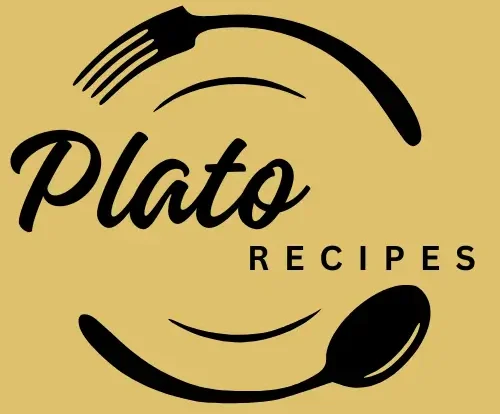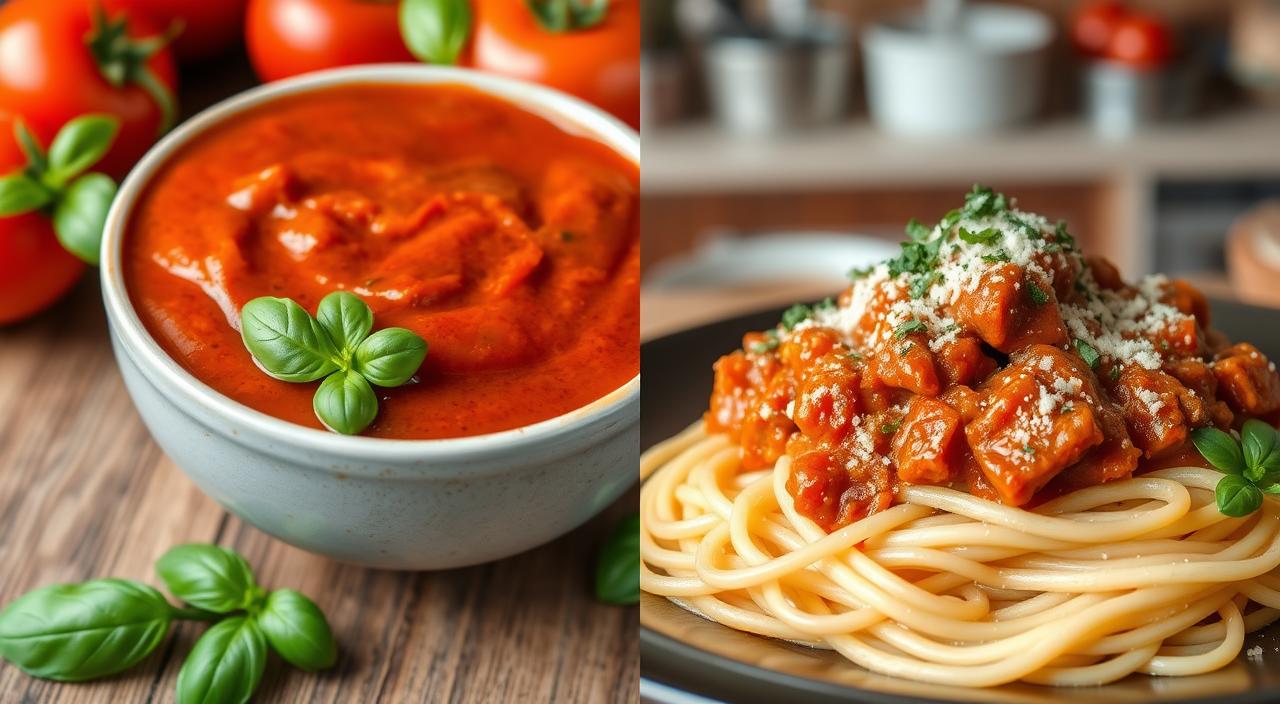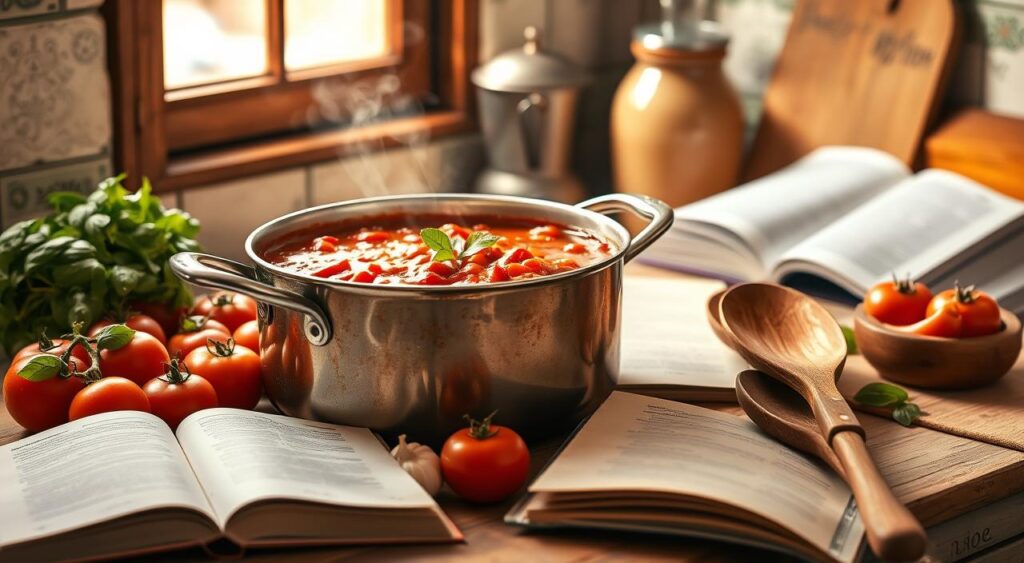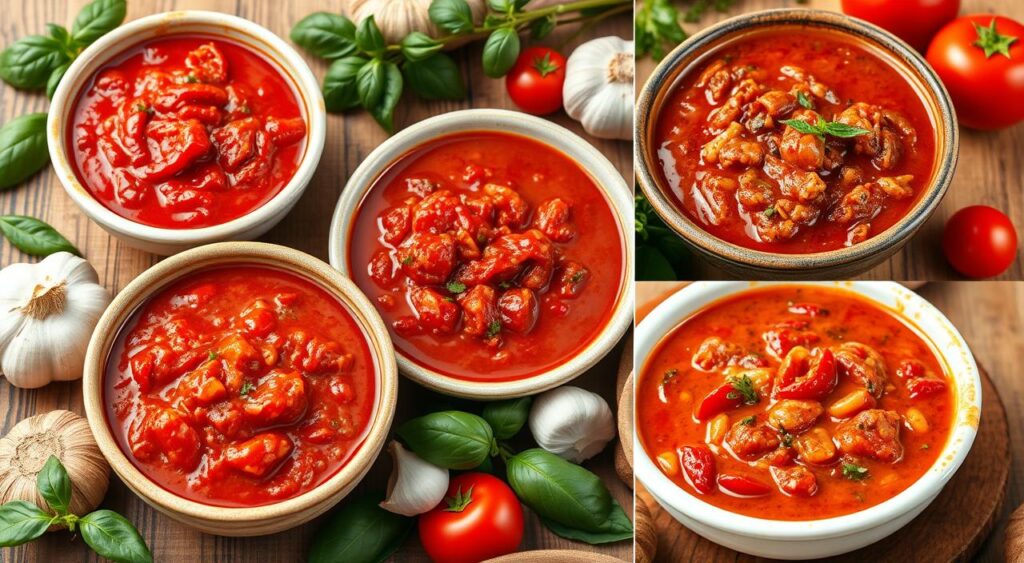Growing up in an Italian-American family, Sunday dinners were sacred. The kitchen would fill with the rich aroma of simmering tomato gravy. This tradition was passed down through generations.
My grandmother’s wooden spoon would stir the pot for hours. She created a sauce that was more than just a meal. It was a connection to our heritage.
The debate between tomato sauce and tomato gravy runs deep in Italian-American communities. While many use these terms interchangeably, there are nuanced differences. In Italy, what we call tomato gravy is simply known as “sugo”. It’s a basic tomato sauce made with olive oil, onions, and garlic.
Understanding the distinction between tomato sauce and tomato gravy reveals a complex culinary landscape. Over 4 million Italians immigrated to the United States between 1880 and 1924. They brought rich cooking traditions that evolved in their new homeland.
The term “gravy” became predominantly used on the East Coast. This includes cities like Philadelphia, New York, and Boston.
Generational differences play a significant role in this linguistic culinary tradition. Older Italian Americans are more likely to use the term “gravy”. Younger generations increasingly adopt “sauce” in their everyday language.
Key Takeaways
- Tomato gravy is a unique Italian-American culinary concept
- The term differs from traditional Italian “sugo”
- Regional variations exist in sauce terminology
- Older generations prefer “gravy,” younger generations prefer “sauce”
- Cultural heritage influences cooking language
Understanding the Sauce vs. Gravy Debate in Italian-American Cuisine
Italian-American cuisine is filled with stories of migration and cultural identity. At its core is a debate: tomato sauce vs. homemade tomato gravy.
Between 1880 and 1924, over 4 million Italians moved to the United States. They brought their cooking traditions with them. Most came from Southern Italy, especially Sicily, changing American food forever.
The Cultural Significance of Naming Conventions
In Italian-American homes, “sauce” and “gravy” mean more than just food. They reflect a family’s cultural roots. Families often argue over which term is more authentic, with different regions having their own views.
- East Coast cities like Philadelphia and Boston use “gravy.”
- Other areas prefer “sauce.”
- Family traditions shape the choice of words.
Regional Variations Across the United States
Where you live can change how you call your homemade tomato gravy. The East Coast, especially, sticks to certain traditions in naming and making these dishes.
“Food is our common ground, a universal experience.” – James Beard
Historical Context of Italian Immigration
As Italian immigrants settled in America, their cooking language changed. Early arrivals used “gravy,” while later generations started using “sauce.” This shows how culture adapts over time.
The story of homemade tomato gravy is more than a recipe. It’s a tale of preserving and changing cultural traditions.
The Origins of Italian Tomato Sauce (Sugo)
Tomato sauce has a rich history in Italian cooking. Tomatoes came to Europe from the Americas, starting a cooking revolution. The first tomato sauce was mentioned in 1692 in “Lo Scalco alla Moderna” by Antonio Latini.
In Italy, tomato sauce has different forms. You’ll find two main types:
- Salsa di pomodoro: A smoother, more refined sauce
- Sugo di pomodoro: A chunkier, more rustic preparation
Starting your tomato gravy recipe journey means learning about these Italian roots. It took about 150 years for the first real Italian tomato sauce recipe to appear. The original was a watery broth, unlike the rich sauces we love today.
“Cooking is about passion, and the heart of Italian cuisine lies in its sauces.” – Unknown Italian Chef
Traditional tomato sauce uses 6 fresh tomatoes or 400g of tinned Italian plum tomatoes. Chefs say to simmer it for 30-40 minutes to get deep flavors. The sauce changes from bright red to a rich, deep orange.
Knowing where tomato sauce comes from helps us see how it evolved in Italian-American cooking. It connects two culinary traditions in a delicious way.
What Makes Traditional Tomato Gravy Unique
Tomato gravy is a beloved tradition in Italian-American kitchens. It turns a simple sauce into a rich dish that shares family stories. Unlike regular tomato sauce, homemade tomato gravy offers a deeper taste experience.
Key Ingredients in Tomato Gravy
The secret of tomato gravy is in its ingredients. Traditional recipes use:
- Thick-cut smoked bacon or pork fat
- Fresh or canned crushed tomatoes
- Kosher salt and ground black pepper
- A touch of sugar to balance acidity
- Chicken stock for added depth
Cooking Methods and Techniques
Making authentic homemade tomato gravy takes patience and skill. It starts with cooking bacon or making a roux. This base is crucial for flavor. Chefs cook it for about 5 minutes until it’s medium-dark brown.
“A great tomato gravy is not just a sauce, it’s a culinary tradition passed down through generations.” – Italian-American Cooking Wisdom
Traditional Family Recipes
Every family’s tomato gravy recipe is special. It takes about 20 minutes to prepare and 35 minutes to cook. It makes 6 servings.
Nutritionally, a serving has 158 calories, 7g carbohydrates, and 6g protein.
Storing homemade tomato gravy is easy. You can refrigerate it for up to 5 days or freeze it for 6 months. This way, you can enjoy it whenever you want.
The Role of Meat in Tomato Gravy
Your tomato gravy recipe isn’t complete without understanding the critical role of meat. Traditional Italian-American Sunday gravy transforms from a simple sauce to a rich, complex dish through strategic meat selection and cooking techniques.
Meat plays a fundamental role in creating depth and flavor in tomato gravy. Different cuts and types of meat contribute unique characteristics to the sauce:
- Beef bones for rich, deep flavors
- Italian sausage for spicy undertones
- Pork neck bones for tender meat essence
- Ground beef for hearty texture
The slow-cooking process allows meats to release their natural juices. This infuses the tomato gravy recipe with incredible complexity. Professional chefs recommend using multiple meat types to create layered flavor profiles.
“Good tomato gravy is about patience and understanding how meats interact with tomatoes” – Chef Maria Rossi
When preparing your tomato gravy recipe, consider browning meats before adding tomatoes. This technique, known as caramelization, develops rich, concentrated flavors. These flavors elevate the entire dish.
Your meat selection can transform a basic tomato sauce into an authentic, memorable tomato gravy. This dish tells a story of culinary tradition.
Essential Ingredients for Authentic Tomato Sauce
Making the perfect homemade tomato gravy starts with picking the right ingredients. The taste of your sauce depends on the quality and mix of what you choose. Let’s look at the key parts that make a simple tomato sauce into a great dish.
Fresh vs. Canned Tomatoes: The Foundation of Great Sauce
San Marzano tomatoes are the top choice for homemade tomato gravy. These Italian tomatoes have a sweet taste and low acidity. While fresh tomatoes can be good, canned whole San Marzano tomatoes give a consistent flavor and taste.
- Recommended: 3 cans (24 oz each) of San Marzano tomatoes
- Optimal ripeness ensures maximum flavor
- Whole peeled tomatoes provide the best texture
Herbs and Seasonings: Crafting Authentic Flavor
Your homemade tomato gravy comes to life with the right herbs and spices. Fresh basil leaves, crushed garlic, and special spices add depth and complexity.
- 8 cloves of fresh garlic
- 9 fresh basil leaves
- 1-2 tablespoons of salt (adjusted to taste)
- 3 tablespoons of tomato paste for rich color
The Importance of Quality Olive Oil
Extra virgin olive oil is key to authentic tomato sauce. It adds richness, depth, and a smooth finish to your homemade tomato gravy.
For the best results, choose cold-pressed, high-quality extra virgin olive oil. The recommended amount is 3 tablespoons. It will boost your sauce’s flavor.
Regional Differences in Italian-American Tomato Gravy
Italian-American tomato gravy is a mix of many culinary traditions. Between 1880 and 1924, over 4 million Italians came to the United States. They brought their cooking styles, changing how sauce was made in different areas.
Every region made its own version of tomato gravy, using local ingredients and family recipes. In New York and New Jersey, the gravy often has several meats. Chicago’s Italian-Americans might make it a bit differently.
- East Coast regions typically use more robust meat combinations
- Midwestern Italian-American communities adapt recipes to local tastes
- West Coast variations often incorporate fresh, locally sourced ingredients
“Every family’s tomato gravy tells a story of migration, adaptation, and culinary creativity.”
The term “tomato gravy” is a sign of early Italian immigrants from Southern Italy and Sicily. Even though newer generations might say “sauce,” the old way of making it is still loved.
Tomato gravy in each region is special, showing the immigrant story and local tastes. These recipes are more than food; they connect us to our heritage.
How to Make Traditional Sunday Tomato Gravy
Making homemade tomato gravy is more than a recipe. It’s a tradition passed down through generations. It needs patience, love, and a few key techniques to make it special.
Start with the right ingredients. San Marzano plum tomatoes are the best choice. They come from Italy and give your gravy a rich flavor.
Essential Ingredients and Preparation
- 2 cans (28 ounces) San Marzano plum tomatoes
- 2-3 pounds pork shoulder
- 10 cloves of garlic
- 4 tablespoons tomato paste
- 1/2 cup red wine
- 2 tablespoons Italian seasoning
Cooking Process
Begin by searing the pork shoulder in olive oil for 5 minutes on each side. This step adds flavor and a golden crust. Then, add diced onions and garlic to caramelize and release their aroma.
“The secret to an incredible tomato gravy is patience—let it simmer slowly and develop deep, rich flavors.”
Simmering Techniques
Add your tomatoes, wine, and seasonings. The trick is to cook it low and slow. Let it simmer for 3-4 hours, stirring now and then. The longer it cooks, the better the flavors will blend.
Pro tip: Use a heavy-bottomed 12-quart pot to prevent burning and manage the bubbling sauce. Your homemade tomato gravy will be ready when it’s thick and clings well to pasta.
The Evolution of Italian-American Sauce Making
The story of tomato gravy is a tale of culinary adventure. Italian immigrants brought their cooking ways to America. This changed American food forever.
Tomato gravy is more than a recipe. It’s a tale of cultural change. Italian families found new ways to make sauce with American ingredients.
“Our sauce tells the story of our family’s journey,” says many Italian-American grandmothers.
Tomato gravy changed in important ways:
- More meat was added because of protein availability
- Cooking times got longer for deeper flavors
- New ingredients were used that weren’t in Italy
- Cooking methods were adapted for American kitchens
The story of tomato gravy is like the immigrant journey. It kept cultural roots but also welcomed new things. What started as a simple sauce in Italy became a hearty gravy in America. It shows the creativity of Italian-American cooking.
By the 1920s, Italian restaurants were all the rage in the U.S. This shows how much tomato gravy and other dishes were loved by Americans.
Modern Interpretations of Classic Recipes
The world of homemade tomato gravy is seeing a tasty revival. Home cooks and chefs are updating old recipes to fit today’s tastes and health needs.
In 2025, we see exciting changes in cooking. A big 80% of young cooks want to add new twists to classic tomato gravy. This shift is not just about cooking. It’s about keeping traditions alive while introducing new ideas.
Contemporary Culinary Transformations
- Plant-based options are changing old recipes
- 67% of homes now try meat substitutes in classic dishes
- Social media like TikTok inspires new recipes
Dietary Modifications
Today’s homemade tomato gravy recipes are very flexible. Cooks are making versions for different diets:
- Gluten-free versions using different flours
- Vegan recipes with plant-based proteins instead of meat
- Low-sodium options for those watching their salt intake
“Cooking is about tradition, but also about evolution and personal expression.”
The #RetroCooking trend has grown by 150%. People want to connect through food. Your homemade tomato gravy can link old comfort to new nutrition.
Storing and Preserving Your Homemade Tomato Preparations
Keeping your tomato gravy fresh is key. First, cool the sauce to room temperature. This step stops bacteria from growing.
For a few days, store it in the fridge. Use airtight containers to keep it fresh. Glass containers with tight lids are best for saving the sauce’s flavor.
Freezing Your Tomato Gravy
Freezing is great for keeping your gravy for longer. Here’s how to do it:
- Divide the sauce into quart-sized freezer bags
- Lay bags flat on a sheet pan to freeze
- Once solid, stack bags for easy storage
- Freeze for up to 3-6 months
“Proper storage is the key to enjoying your homemade tomato gravy weeks or even months after cooking.” – Traditional Italian-American Cooking Wisdom
When you want to use your frozen gravy, thaw it in the fridge. Then, heat it on the stovetop slowly. Pro tip: Add a splash of water or broth if it’s too thick after thawing.
Conclusion
Your journey with tomato gravy is more than a recipe. It’s a celebration of family and culture. It started during the Depression and is now a comfort food loved by many.
Tomato gravy is versatile, turning simple ingredients into a delicious dish. It’s perfect for breakfast or dinner. It takes about 20 minutes to make and serves 4-6 people. Each serving has only 158 calories, making it a light yet satisfying option.
Exploring tomato gravy’s regional flavors, from the Appalachian Mountains to the Mississippi Delta, shows its true value. It’s not just a recipe but a living tradition. By using local ingredients and traditional techniques, you keep this American food culture alive for the next generations.
Embrace the art of making homemade tomato gravy. Let each batch share a story of family, flavor, and Southern cooking’s enduring spirit.
FAQ
What is the difference between tomato sauce and tomato gravy?
In Italian-American cooking, tomato gravy is a meat-based sauce. It’s simmered for hours with meats like sausage and meatballs. Tomato sauce, on the other hand, is simpler and doesn’t include meat. The term “gravy” is more common in the Northeastern United States.
Why do some Italian-Americans call tomato sauce “gravy”?
This tradition comes from Italian-American immigration. Many immigrants called the Italian “ragù” (meat-based sauce) “gravy” in English. This shows how they adapted their culture in the United States.
What meats are typically used in traditional tomato gravy?
Traditional tomato gravy often has beef bones, Italian sausages, and meatballs. Sometimes, pork ribs are added too. These meats simmer in the sauce, making it rich and flavorful.
How long should I cook homemade tomato gravy?
Homemade tomato gravy needs slow cooking for 3-4 hours. This lets the meats flavor the sauce deeply. The slow cooking is key to a rich, authentic taste.
Can I make tomato gravy without meat?
Yes, you can make a vegetarian version of tomato gravy. Use extra vegetables, herbs, and seasonings for flavor. But, some say meat is essential for true tomato gravy.
What are the best tomatoes for homemade tomato gravy?
San Marzano tomatoes are the best for tomato gravy. They’re sweet, have low acidity, and few seeds. This makes them perfect for a smooth sauce.
How long can I store homemade tomato gravy?
Homemade tomato gravy can be stored for 4-5 days in the fridge or 3-4 months in the freezer. Use airtight containers and cool it first. This keeps it safe and flavorful.
Is tomato gravy the same across all Italian-American regions?
No, it varies by region in the United States. Each area, influenced by specific parts of Italy, has its own gravy recipe. These reflect local traditions and family histories.



